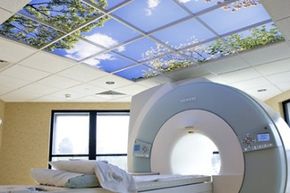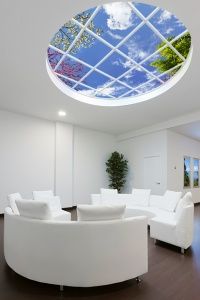Rooms without windows, especially in places like hospitals and offices, can be drab and downright depressing. Even your windowed home or office might have an unenviable view of nearby buildings. Sometimes the best you can do is bring in plants, hang posters or take a walk to the nearest window or exit to get a break from the same boring everyday walls and take in a view of nature.
But now, as one might expect, there is a more high tech solution. With virtual windows, you can gaze out onto the Golden Gate Bridge, the Canadian Rockies or even an underwater seascape from the comfort of your own couch or office chair. They can be used in a room with a dull view, or an interior room with no real windows at all.
Advertisement
A virtual window is something that resembles a window, but through which you are viewing an artificially created scene rather than the actual outside world. Some even incorporate sound. There are different types to choose from depending upon how much variety and realism you want out of your scenery, and, of course, your budget. They can be faux windows or mock skylights, and can include only one pane or many. In any case, they're illusions to make you feel better about your surroundings, and through them you can get a refreshing view of nature or some other part of the world -- even outer space.
Although a picture or painting on a wall could in some ways be considered do the same job, there's a bit more to virtual windows in most cases. They range from still images to videos to scenes that shift based on your movement.
Advertisement


